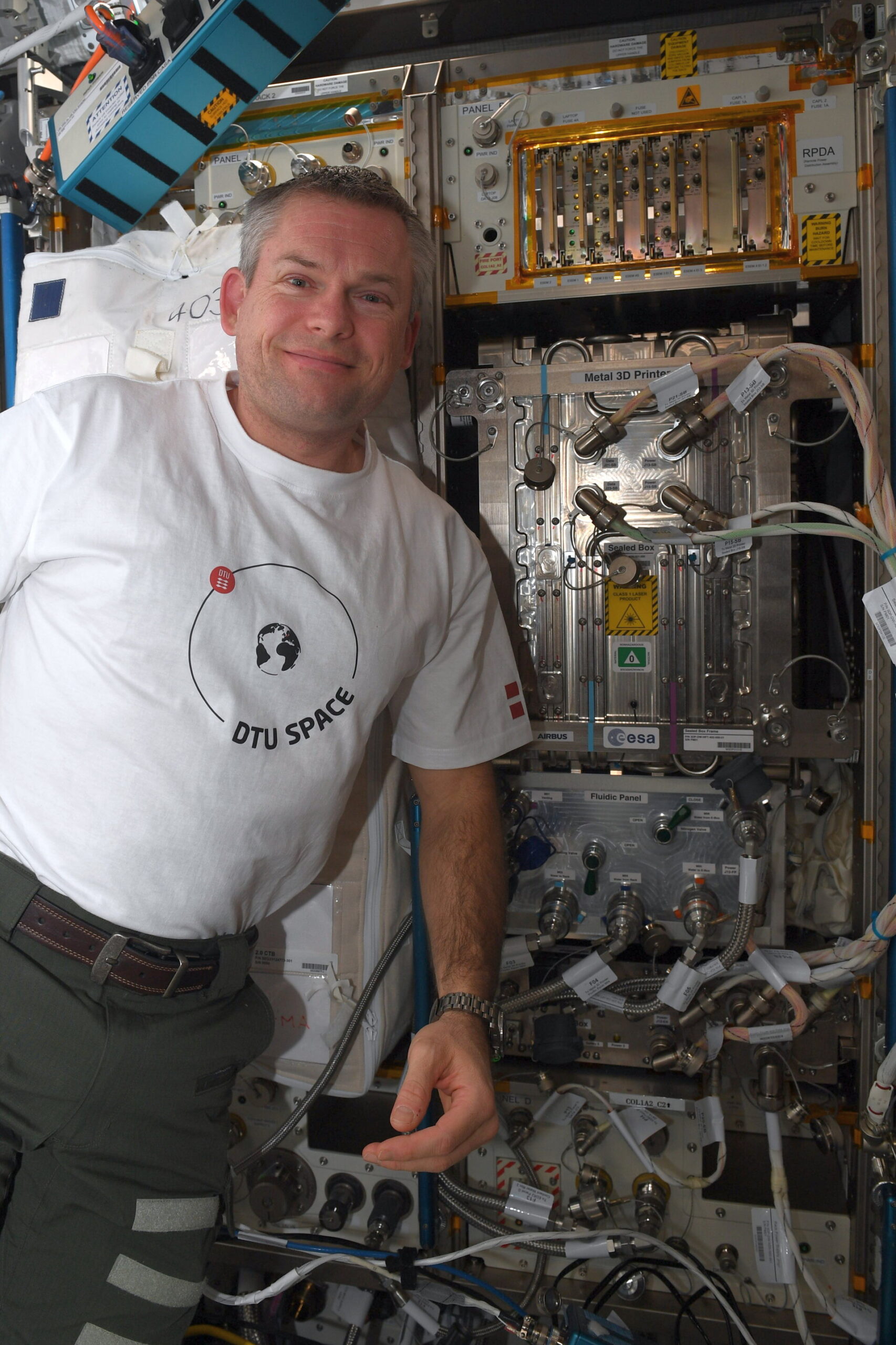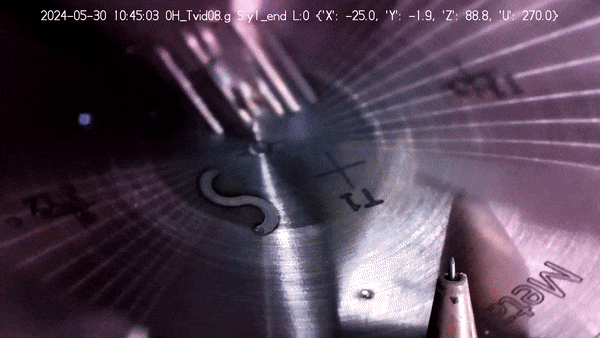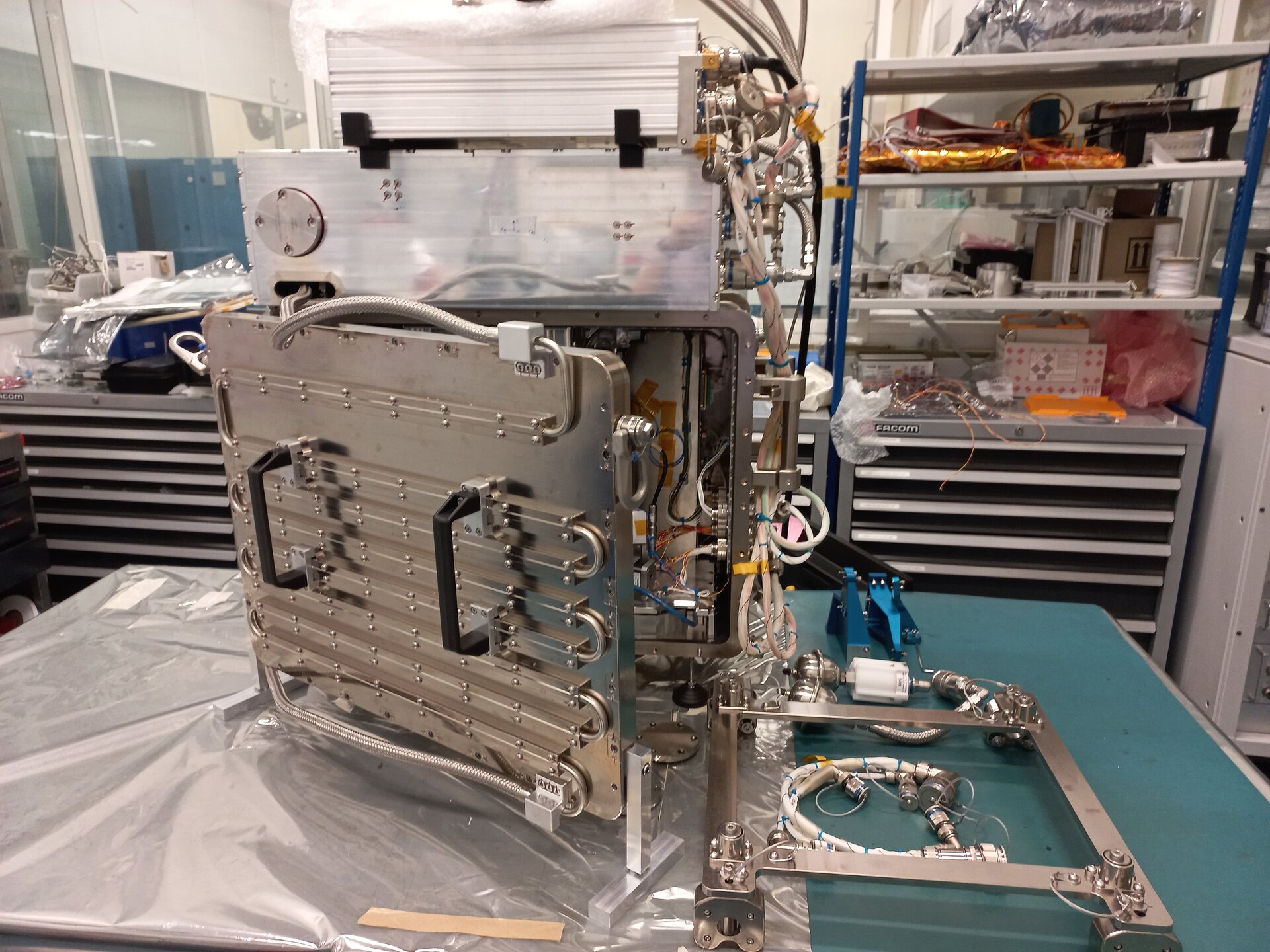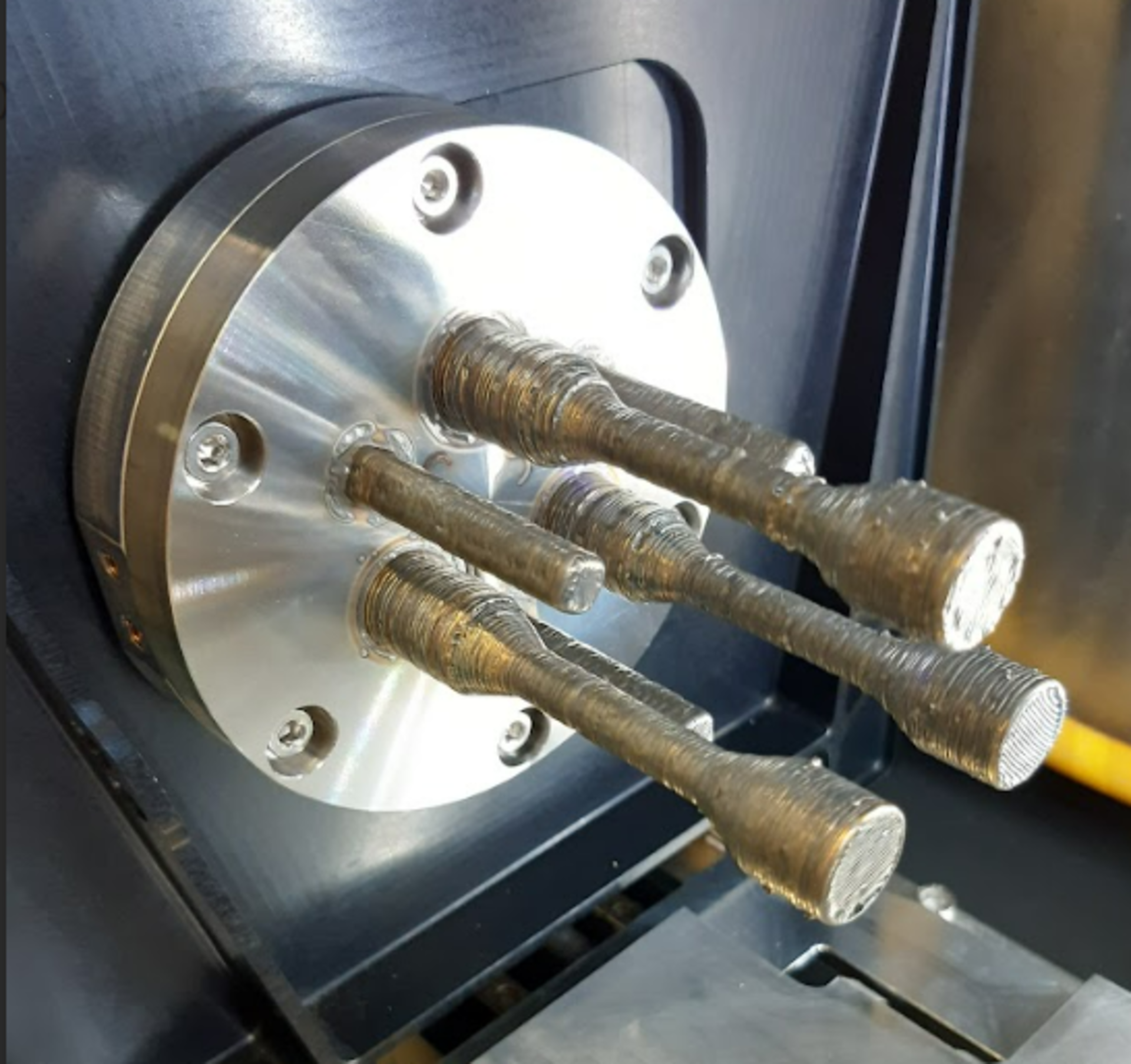Astronauts on the International Space Station (ISS) can now 3D print metal parts. After the successful installation of the European Space Agency’s (ESA) metal 3D printer last January, the first test part has been produced. Developed by Airbus under an ESA contract, the printer uses stainless steel wire and a high-power laser to create parts. This breakthrough allows astronauts to manufacture essential tools and parts directly in space, reducing the need to supply materials from Earth and boosting mission flexibility.
This milestone occurred on June 6, 2024, in ESA’s Columbus laboratory module, which is on the starboard side of the ISS, attached to the Harmony module. The historic event was the successful deposition of a small S-curve in liquefied stainless steel. This S-curve, literally shaped like the letter “S,” serves as a test line to demonstrate the readiness and precision of the metal printer for more complex tasks. With the successful print, ESA has shown that the printer can handle detailed and precise manufacturing processes in microgravity.
“This S-curve is a test line, successfully concluding the commissioning of our metal 3D printer,” explained ESA technical officer Rob Postema. “The success of this first print, along with other reference lines, leaves us ready to print full parts in the near future. We’ve reached this point thanks to the hard efforts of the industrial team led by Airbus Defence and Space SAS, the CADMOS User Support Centre in France, from which print operations are overseen from the ground, as well as our own ESA team.”
The 3D printer results from a collaborative effort between Airbus, CADMOS, and ESA. Airbus Defence and Space SAS, a division of Airbus specializing in aerospace and defense technologies, designed and built the printer under a contract with ESA’s Directorate of Human and Robotic Exploration.
It uses a process where stainless-steel wire is fed into the printing area and melted by a high-power laser, which is about a million times more powerful than a standard laser pointer. The wire melts at its end as it dips into the melt pool, adding metal to the print.
After reaching the ISS, ESA astronaut Andreas Mogensen installed the 180-kg machine. However, France’s CADMOS, which stands for Centre d’Aide au Développement des activités en Micropesanteur et des Opérations Spatiales, oversees the entire printing process from the ground. For safety, the printer operates within a fully sealed box to prevent excess heat or fumes from escaping, and the crew only needs to open a nitrogen and venting valve.
Sébastien Girault, part of the team at consortium leader Airbus, concluded that the team was very happy to have performed the very first metal 3D printing aboard the ISS and that “the quality is as good as we could dream.”

ESA astronaut Andreas Mogensen after installing the Metal 3D Printer in the Columbus Module of the ISS. Image courtesy of ESA.
Following the successful test print, four different shapes have been selected for full-scale 3D printing, each taking two to four weeks to finish printing. These printed parts will later be returned to Earth for analysis and comparison with reference prints made on the ground. Two of these parts will be examined in the Materials and Electrical Components Laboratory at ESTEC in the Netherlands to study the effects of prolonged microgravity on metal printing. The other two will be sent to the European Astronaut Centre and the Technical University of Denmark (DTU). The key to this experiment will be understanding how 3D printing in metal differs, if any, from the identical prints made on Earth.
ESA’s long-term goal is to create a circular space economy where materials can be recycled and repurposed in orbit. This would limit the need to send new tools and parts from Earth, allowing astronauts to print what they need directly in space. For example, an operational version of this metal 3D printer could repurpose old satellite parts into new tools or structures.
ESA is not the first to have thought of this idea, although it is the first to have executed it in orbit. Other agencies and companies have been actively pursuing similar endeavors. For instance, NASA has been developing metal 3D printing technologies like the Electron Beam Freeform Fabrication (EBF3) system, which uses an electron beam gun and dual wire feed to manufacture metallic structures in space.
Paving the way for a new era of in-orbit manufacturing, ISS space crews now have polymer and metal 3D printers in orbit. These printers eventually help them become more self-sufficient and reduce their dependency on supplies from Earth. As ESA materials engineer Advenit Makaya noted, understanding how prolonged microgravity affects metallic material printing is crucial for future developments. With more progress, the vision of a circular space economy where materials are recycled and reused in orbit gets closer to reality.
Subscribe to Our Email Newsletter
Stay up-to-date on all the latest news from the 3D printing industry and receive information and offers from third party vendors.



